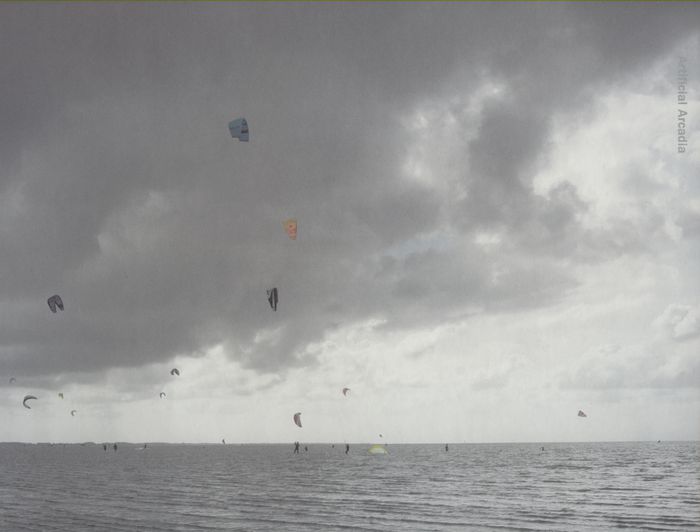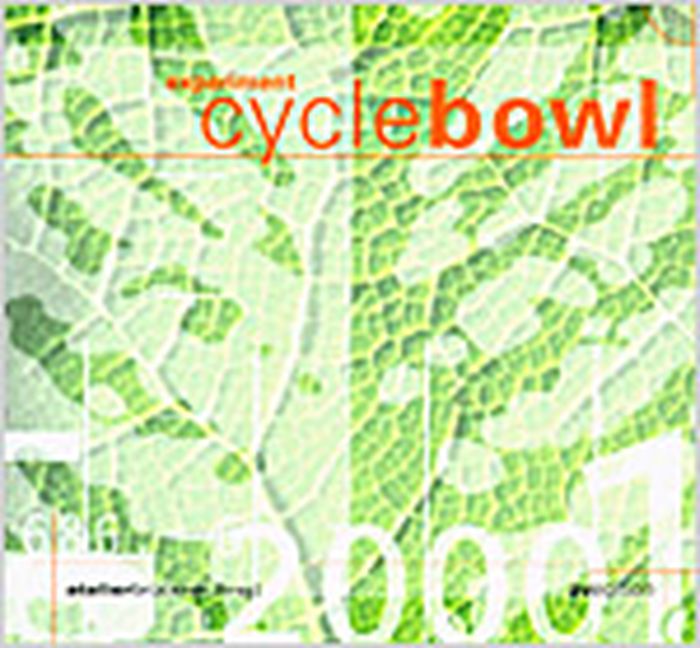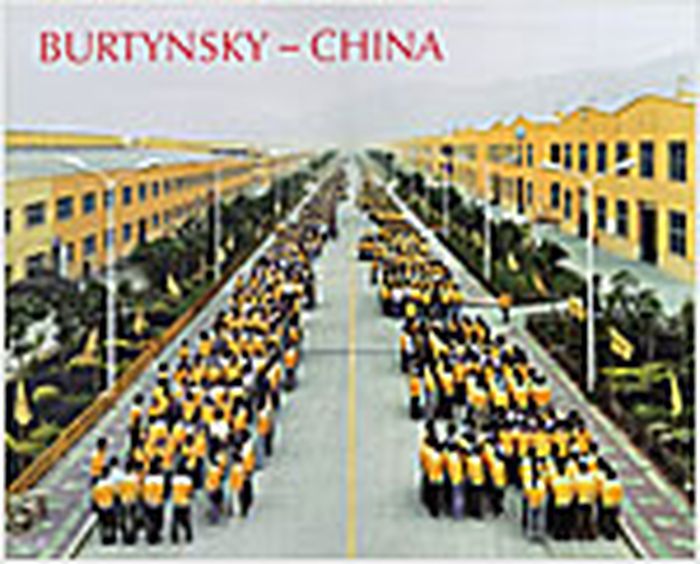livres
Description:
287 pages : illustrations (some color), color map ; 33 cm
Aspen, CO : Aspen Art Museum, [2014], New York : D.A.P./Distributed Art Publishers., ©2014
Shigeru Ban : humanitarian architecture / contributors, Shigeru Ban, Claude Bruderlein, Michael Kimmelman, Koh Kitayama, Brad Pitt, Naomi Pollock, Eyal Weizman, Heidi Zuckerman Jacobson.
Actions:
Exemplaires:
Description:
287 pages : illustrations (some color), color map ; 33 cm
livres
Aspen, CO : Aspen Art Museum, [2014], New York : D.A.P./Distributed Art Publishers., ©2014
$60.00
(disponible sur commande)
Résumé:
New connoisseurs take the opportunities offered by the typically Dutch phenomenon of landscape being continuously adapted to changing demands, always with temporary leftovers awaiting their turn for utilitarian recycling. New ways of thinking about landscape design originate from this specialist landscape use. Bas Princen's arguments take the form of superb photography.(...)
Bas princen: Artificial Arcadia
Actions:
Prix:
$60.00
(disponible sur commande)
Résumé:
New connoisseurs take the opportunities offered by the typically Dutch phenomenon of landscape being continuously adapted to changing demands, always with temporary leftovers awaiting their turn for utilitarian recycling. New ways of thinking about landscape design originate from this specialist landscape use. Bas Princen's arguments take the form of superb photography. The pictures produce awareness about the complex qualities that construct contemporary landscape, such as accessibility, wind direction, water currents and communication networks. In addition the use of certain products, such as kites, mountain bikes and GPS monitors has a bearing on the way in which landscape is understood. Bas Princen enters these landscapes with the slowness, sharpness and precision of a large-format view camera. Although he has a keen eye for user interpretations and has produces over 40 awesome and puzzling pictures, "Artificial Arcadia" is mainly a book about landscape and its design. Texts by Lars Lerup, Bart Lootsma, Wim Cuyvers, Jeff Derksen and Dirk Sijmons reflect on the photographs and present different views on landscapes in transition.
Monographies photo
Experiment cyclebowl
$66.00
(disponible sur commande)
Résumé:
A pavilion of cycles at Expo in Hanover. An interdisciplinary work involving architecture, scenography, graphics, sound, light, film, drama and an actual tornado, created by Atelier Brückner for the Expo 2000. Dual System Deutschland, a company which is responsible for the reuse and recycling of packaging in Germany commissioned the Stuttgart firm Atelier Brückner to(...)
juin 2002, Ludwigsburg
Experiment cyclebowl
Actions:
Prix:
$66.00
(disponible sur commande)
Résumé:
A pavilion of cycles at Expo in Hanover. An interdisciplinary work involving architecture, scenography, graphics, sound, light, film, drama and an actual tornado, created by Atelier Brückner for the Expo 2000. Dual System Deutschland, a company which is responsible for the reuse and recycling of packaging in Germany commissioned the Stuttgart firm Atelier Brückner to create a pavilion at the EXPO in Hanover which would reflect the company's vision of combining the product cycle with the environment and use of resources in a responsible way. The journey through this cycle is represented visually through the architecture and staging of the pavilion. Living plants, real objects, information, light and sound are brought together and provide an exciting backdrop for the dramatic highlight - a 25m high tornado which was generated every hour. This book shows primarily creative process leading to the final design and architecture of the Cyclebowl. Enhanced with technical details of the innovative facades, the publication is a fascinating documentation of architecture as a means of conveying ideas.
$44.50
(disponible sur commande)
Résumé:
In "Archiveology" Catherine Russell uses the work of Walter Benjamin to explore how the practice of archiveology-the reuse, recycling, appropriation, and borrowing of archival sounds and images by filmmakers-provides ways to imagine the past and the future. Noting how the film archive does not function simply as a place where moving images are preserved, Russell examines(...)
Archiveology: Walter Benjamin and archival film practices
Actions:
Prix:
$44.50
(disponible sur commande)
Résumé:
In "Archiveology" Catherine Russell uses the work of Walter Benjamin to explore how the practice of archiveology-the reuse, recycling, appropriation, and borrowing of archival sounds and images by filmmakers-provides ways to imagine the past and the future. Noting how the film archive does not function simply as a place where moving images are preserved, Russell examines a range of films alongside Benjamin's conceptions of memory, document, excavation, and historiography. She shows how city films such as Nicole Vedres's Paris 1900 (1947) and Thom Andersen's Los Angeles Plays Itself (2003) reconstruct notions of urban life and uses Christian Marclay's The Clock (2010) to draw parallels between critical cinephilia and Benjamin's theory of the phantasmagoria. Russell also discusses practices of collecting in archiveological film and rereads films by Joseph Cornell and Rania Stephan to explore an archival practice that dislocates and relocates the female image in film. In so doing, she not only shows how Benjamin's work is as relevant to film theory as ever; she shows how archiveology can awaken artists and audiences to critical forms of history and memory.
livres
Description:
viii, 212 pages : illustrations, maps ; 24 cm
Baltimore : The Johns Hopkins University Press, 2013.
The housing bomb : why our addiction to houses is destroying the environment and threatening our society / M. Nils Peterson, Tarla Rai Peterson, Jianguo Liu.
Actions:
Exemplaires:
Description:
viii, 212 pages : illustrations, maps ; 24 cm
livres
Baltimore : The Johns Hopkins University Press, 2013.
livres
Description:
67 pages : illustrations (chiefly color) ; 18 cm
Berlin : Aedes, [2022], ©2022
neri&hu design and research office : reflective nostalgia / [Preface: Kristin Feireiss and Hans-Jürgen Commerell].
Actions:
Exemplaires:
Description:
67 pages : illustrations (chiefly color) ; 18 cm
livres
Berlin : Aedes, [2022], ©2022
livres
Description:
xii, 212 pages : illustrations, plans ; 29 cm
New York : McGraw-Hill, ©1994.
Preserving American mansions and estates / William C. Shopsin.
Actions:
Exemplaires:
Description:
xii, 212 pages : illustrations, plans ; 29 cm
livres
New York : McGraw-Hill, ©1994.
livres
Description:
297 pages : illustrations ; 19 cm.
Genève : MetisPresses, 2018., copyright 2018
Synergies urbaines : pour un métabolisme collectif des villes / Roberto d' Arienzo.
Actions:
Exemplaires:
Description:
297 pages : illustrations ; 19 cm.
livres
Genève : MetisPresses, 2018., copyright 2018
livres
Description:
222 pages : illustrations (chiefly color), plans ; 27 cm
Zurich, Switzerland : Park Books, [2023], ©2023
LIQUIFER : living beyond Earth : architecture for extreme environments / authors, Jennifer Cunningham, Waltraut Hoheneder, Barbara Imhof, René Waclavicek, Brent Sherwood and Christina Ciardullo.
Actions:
Exemplaires:
Description:
222 pages : illustrations (chiefly color), plans ; 27 cm
livres
Zurich, Switzerland : Park Books, [2023], ©2023
$102.00
(disponible sur commande)
Résumé:
Edward Burtynsky’s imagery explores the intricate link between industry and nature, combining the raw elements of mining, quarrying, shipping, oil production, and recycling into eloquent, highly expressive visions that find beauty and humanity in the most unlikely places. These images are metaphors for the dilemma of our modern existence: we are drawn by desire-the desire(...)
Monographies photo
janvier 2006, Göttingen
Burtynsky - China : the photographs of Edward Burtynsky
Actions:
Prix:
$102.00
(disponible sur commande)
Résumé:
Edward Burtynsky’s imagery explores the intricate link between industry and nature, combining the raw elements of mining, quarrying, shipping, oil production, and recycling into eloquent, highly expressive visions that find beauty and humanity in the most unlikely places. These images are metaphors for the dilemma of our modern existence: we are drawn by desire-the desire to live well and in comfort-yet we all know that the world is suffering to meet those demands. Our dependence on nature to provide the materials for our consumption and our concern for the health of our planet sets us into uneasy contradiction and feeds the dialogue in Burtynsky’s images between attraction and repulsion, seduction and fear. Burtysnky’s latest body of work gives visual form to the industrial and urban transformation of China, a place where industrial forces are gathering on a scale that the world has never experienced before. If the earth’s resources were up to now under siege through western colonialism and technological progress, then China is on the brink of a sweeping assault on the planet’s ecosystem that is only just forming and is nowhere close to expressing its full impact.
Monographies photo



